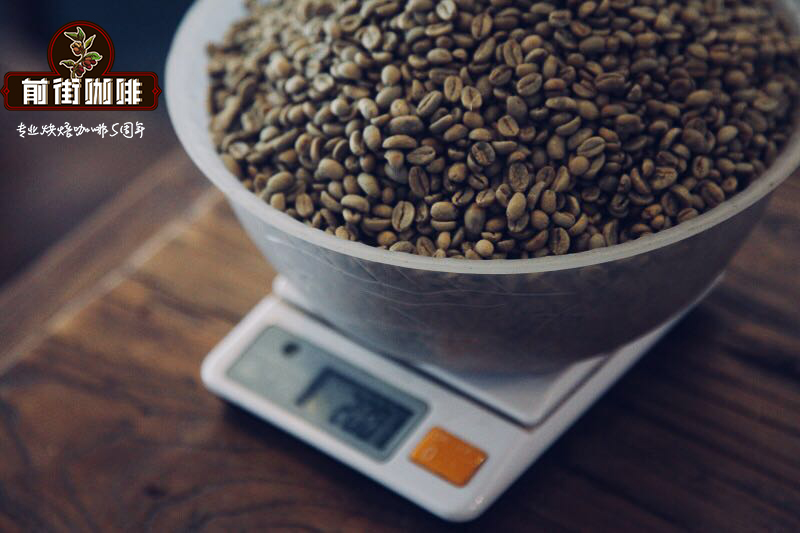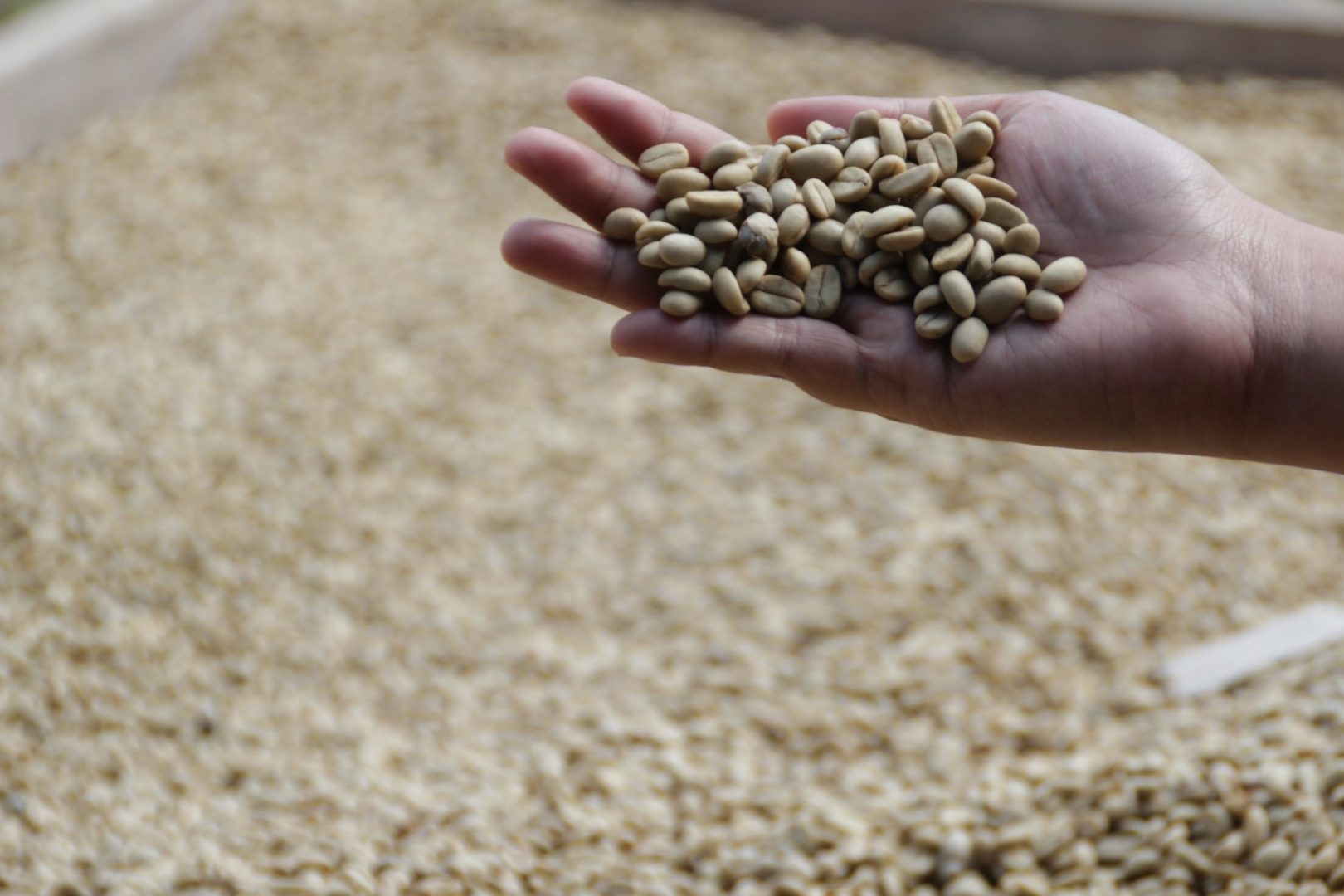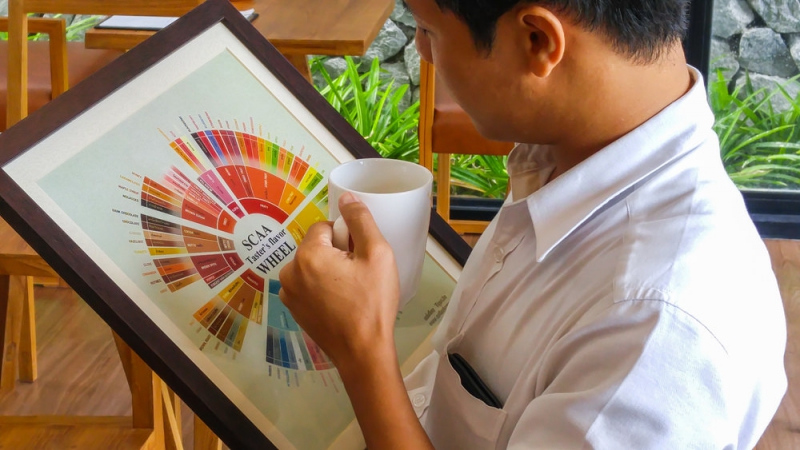A brief analysis of the common coffee bean treatment methods the differences between coffee bean treatment methods and their advantages and disadvantages

Professional coffee knowledge exchange more coffee bean information please follow the coffee workshop (Wechat official account cafe_style)
How is coffee made? a summary of several common ways to treat raw coffee and beans
As we all know, there are many ways to treat coffee beans.
But do you know the difference between these treatments?
Some of the most common treatments
Sun treatment
Sun treatment will first place ripe or half-ripe beans in a drying farm for natural drying. The specific time depends on the local climatic conditions, which usually takes two to four weeks.
When the moisture content of coffee beans is reduced to 12%, use a sheller to grind off the dry pulp and silver skin.
The sun treatment has a very high requirement on the climate, and if you encounter a rainy day in the sun, it will make the beans moist and moldy. The color of raw beans in the sun is yellow, and the center will be brown after baking.
Sun beans have relatively better sweetness and mellow thickness, while less sour taste, but the quality is more unstable, there will be greater fluctuations. Because of the low cost of sun treatment, it is widely used not only in Ethiopia and Yemen, but also in Robusta coffee grown in Africa and Indonesia.
Washing treatment
Coffee washing began in the mid-18th century. In the washing process, the pulp of the coffee fruit (red cherry) is first removed, then the residual mucous membrane on the inner pericarp is removed by a fermentation tank, and the beans are washed and dried. The difference between non-water washing and water washing is that the non-water washing method is to remove the pulp after drying, while the water washing method is to remove the pulp before drying.
The water washing method can remove impurities (stone or garbage, etc.) and defective beans through each step, so the appearance of raw beans is uniform, is generally considered to be of high quality, and the trading price is higher than that of coffee beans refined by natural drying.
However, the more detailed the division of labor, the more procedures for operation and hygiene management, and the higher the risk, so washing is not necessarily tantamount to high quality. The biggest disadvantage of washed coffee is that coffee beans are prone to the stench of fermentation during fermentation. Some coffee experts point out: "A fermented coffee bean will spoil 50 grams of beans." Beans will be stained with the smell of fermentation, most of which are due to the lack of management and maintenance of the fermentation tank. Soaking the coffee beans with mucous membrane on the endocarp in the fermentation tank for one night can remove the mucous membrane. However, if the microbes in the fermentation tank change, it will cause the coffee beans to be stained with fermented flavor.
In addition, the equipment cost of coffee washing method is high, the washing steps are also quite time-consuming, and the production cost is relatively higher.
Washing steps:
1. Choose beans: put the harvested fruit in a water tank and soak for about 24 hours. At this time, ripe fruit will sink, while immature and overripe fruit will float up and can be removed.
two。 Remove the pulp: use a machine to remove the skin and pulp, leaving only the coffee beans wrapped in the endocarp. At this time, there is a layer of mucous membrane on the outside of the beans, and the process of washing is to wash this layer of mucous membrane.
3. Hair alcohol: the adhesion of the mucosa is very strong, and it is not easy to remove. It must be placed in the slot for about 18-36 hours to make it alcohol and decompose the mucosa. There are two methods of fermentation, namely wet hair alcohol and dry hair alcohol, as the name implies, the former adds water, the latter does not add water. In the process of producing alcohol, the seeds and internal pulp will produce special changes, which is one of the steps that most affect the flavor of coffee. Some farms add hot water or alkanolins to speed up the production of alcohol, which has a negative impact on the quality of coffee beans and is not popular with selected coffee lovers.
4. Washing: farms that use the washing method must build washing ponds and be able to introduce an endless supply of running water. During the treatment, the finished beans are put into the pool and passed back and forth, using the friction of beans and the power of running water to wash the coffee beans until smooth and clean.
5. Drying: after washing, the coffee beans are still wrapped in the pericarp with a moisture content of 50%. They must be dried to reduce the moisture content to 12%, otherwise they will continue to be mellow, moldy and rotten. The better treatment is to use sunlight to dry, although it will take 1-3 weeks, but the flavor is very good and very popular. In addition, some places use machines to dry, greatly shorten the processing time, so that the flavor is not as good as the sun-dried coffee.
6. Shelling: dried beans can be stored in a warehouse or handed over to the factory for shelling to remove endocarp and silver film.
7. Selection and grading: like the sun-drying method, washed coffee has a process of picking and grading, which is used to remove defective beans, ensure better quality, and then give them to exporters to sell around the world.
Honey treatment
The so-called honey treatment (Miel Process in Spanish) is said to refer to the process of making raw beans by sun-drying with mucous membranes. After the outer pulp of the coffee bean is removed, there will be a layer of sticky jelly. The traditional method of washing is to wash it off with clean water, but because of the limitation of water resources in some high-altitude areas, this method of direct drying has emerged.
Honey treatment process is vulnerable to pollution and mildew, need to closely monitor the whole process, constantly turn, accelerate drying, in order to avoid bad fermentation flavor. Its advantage is that it can best preserve the original sweet flavor of the ripe fruit of the coffee, giving the coffee a light and elegant black sugar flavor and drupe flavor, while the berry flavor also supports the basic aroma of red wine, which is considered to be a very elegant product.
The popularity of honey-treated coffee beans is largely due to its sweet and thick characteristics, which are very suitable for Espresso production in cafes. In recent years, more and more coffee beans are called "Miel Process", and they have also become a favorite material for international coffee contestants.
According to the proportion of pectin retained and the drying method, it can be divided into:
White Honey white honey 80% mae 90% pectin has been removed.
Yellow Honey yellow honey retains 50% pectin and has no fermentation.
Red Honey red honey basically retains all pectin and has no fermentation.
Black Honey black honey basically retains all pectin and dries at a slightly higher temperature at low altitude. It is covered with slight fermentation in the first 24 hours, and the subsequent drying process is transferred to an African drying bed for drying.
Gold Honey Jinmi basically retains all pectin, drying at low temperature at high altitude and prolonging the drying time.
Semi-washing method
Semi-washing is a relatively new and rare method. This method is also suitable for processing local coffee only in specific areas of some countries where there is a long drying period in the climate. The coffee produced by this method is sticky, and the mucus is not removed with fermentation in the tank. Therefore, the coffee produced by this semi-wet treatment contains the characteristics of both wet treatment and drying treatment. The acidity, sweetness, seasoning, and flavor of this kind of coffee are quite good; the only drawback is that the taste of such coffee is not as strong as that produced by pure drying or washing.
Bean selection: first put the coffee fruit into the big water tank, move the red fruit and semi-green and semi-red fruit into the pulp sieving machine to remove the pulp and impurities.
Remove pectin: take out the coffee beans, do not need to take the sun, let alone pour into the sink to ferment, but directly into the next pectin scraper, only a small amount of water can scrape away the sticky pectin chips mechanically.
Sun exposure: then take out the raw beans with a smooth surface and expose them outdoors until the water content is reduced to 12%.
Half-sun method
In order to improve the quality of coffee in Brazil, the Brazilian government has invented half-sun method and vigorously promoted it. At present, almost all high-quality coffee beans in Brazil use half-sun method to treat raw beans. It can be said that half-sun method has successfully improved the overall quality of Brazilian coffee.
The pre-treatment method of half-sun method is almost the same as that of water washing.
Choose beans: first put the coffee fruit in a large water tank, remove the floating fruit, and then put the sunken fruit into the pulp sieving machine to remove the pulp. It is more important to get rid of the immature fruit and, more importantly, to let the coffee beans dry in the sun no longer with pulp, but only with a layer of pectin, which helps to control the subsequent fermentation process.
Dry: move the beans to the bean drying farm to dry, about 3 days to achieve a certain degree of dryness
Drying: dry further in a dryer until the water content of the beans reaches between 10.5% and 12%.
Polishing: the final polishing process is carried out before the beans are bagged and exported.
Because the half-sun method has certain requirements on climate and technology, only Brazil can use this method more widely. Through half-sun treatment, it not only retains the unique sweet taste of the sun method, but also avoids the mildew taste of the sun method, shaping the unique flavor of Brazilian coffee.
Wet planing treatment
Wet shaving (Wet-Hulling) is the traditional treatment of Indonesian Sumatran coffee, that is, when the raw beans are half-dried and the moisture content is still as high as 30% to 50%, the seed shells are removed first, and then continue to be dried in order to solve the problem of drying for too long. As the drying time is shortened to two to four days, the fermentation period of coffee beans is shortened, and the acidity decreases a lot, but the relative thickness increases, with obvious aromas of caramel and fruit, even with aromas of herbs or grass and wood. this is the unique regional fragrance of Sumatra.
However, the effect of early removal of the seed shell is that the raw beans are half dry without the last two layers of protection (note: the four layers of protection of coffee beans: pericarp, pectin, seed shell, silver skin), which is like taking off your clothes and basking in the sun. Although the wet planing method solves the problem of drying time, the relative probability of raw beans being contaminated by molds, fungi and yeasts is also greatly increased. Paradoxically, however, these factors have become the key factors in creating Manning's special aroma.
Another feature of the wet planing method is the increase in the probability of the so-called "sheep's hoof beans". Because raw beans are used to grow shells when they are still very wet and semi-soft, fragile soft and wet raw beans are very easily cracked, broken, or scratched by mechanical force, resulting in the formation of so-called sheep's hoof beans and scratched beans, resulting in poor sales of raw beans.
End
Important Notice :
前街咖啡 FrontStreet Coffee has moved to new addredd:
FrontStreet Coffee Address: 315,Donghua East Road,GuangZhou
Tel:020 38364473
- Prev

Molds, pesticides, carcinogens? Answers to the three major food safety questions that coffee consumers are most concerned about
Professional coffee knowledge exchange more coffee bean information Please follow the coffee workshop (Wechat official account cafe_style) three or five friends gather in the afternoon, have a cup of coffee as a leisurely embellishment, it is a good choice. But sometimes the editor will hear a friend say, "I can't drink coffee!" I have heart palpitations, I can't sleep, I get dizzy when I drink coffee. Various symptoms;?? Although the editor
- Next

Know Coffee Flavor Wheel! How many kinds of coffee do you smell?
Professional coffee knowledge exchange more coffee bean information please follow the coffee workshop (Wechat official account cafe_style) have you heard of coffee flavor wheel? The revised version of the coffee flavor wheel (Coffee Tasters Flavor Wheel) designed by the American Fine Coffee Association (SCAA) makes full reference to the World Dictionary of Coffee sensory Research (The World Cof).
Related
- How did the Salvadoran coffee industry develop in Central America?
- What exactly does the golden cup extraction of coffee mean?
- The Origin of Coffee flower
- [2023 Starbucks World Earth Day] there are more meaningful things besides free Starbucks coffee!
- What kind of coffee is there in Spain? 9 Flavors of Spanish Coffee
- Aromatic African coffee| Kenya's coffee culture and historical production area
- Liberica Coffee Bean knowledge: the characteristics of Liberian Coffee beans of the three original species of Coffee beans
- The origin and formula of Spanish latte introduces the taste characteristics of Bombon coffee in Valencia, Spain.
- How to adjust the solution of over-extracted coffee
- What is the tasting period of coffee beans? What is the period of coffee and beans? How should coffee wake up and raise beans?

